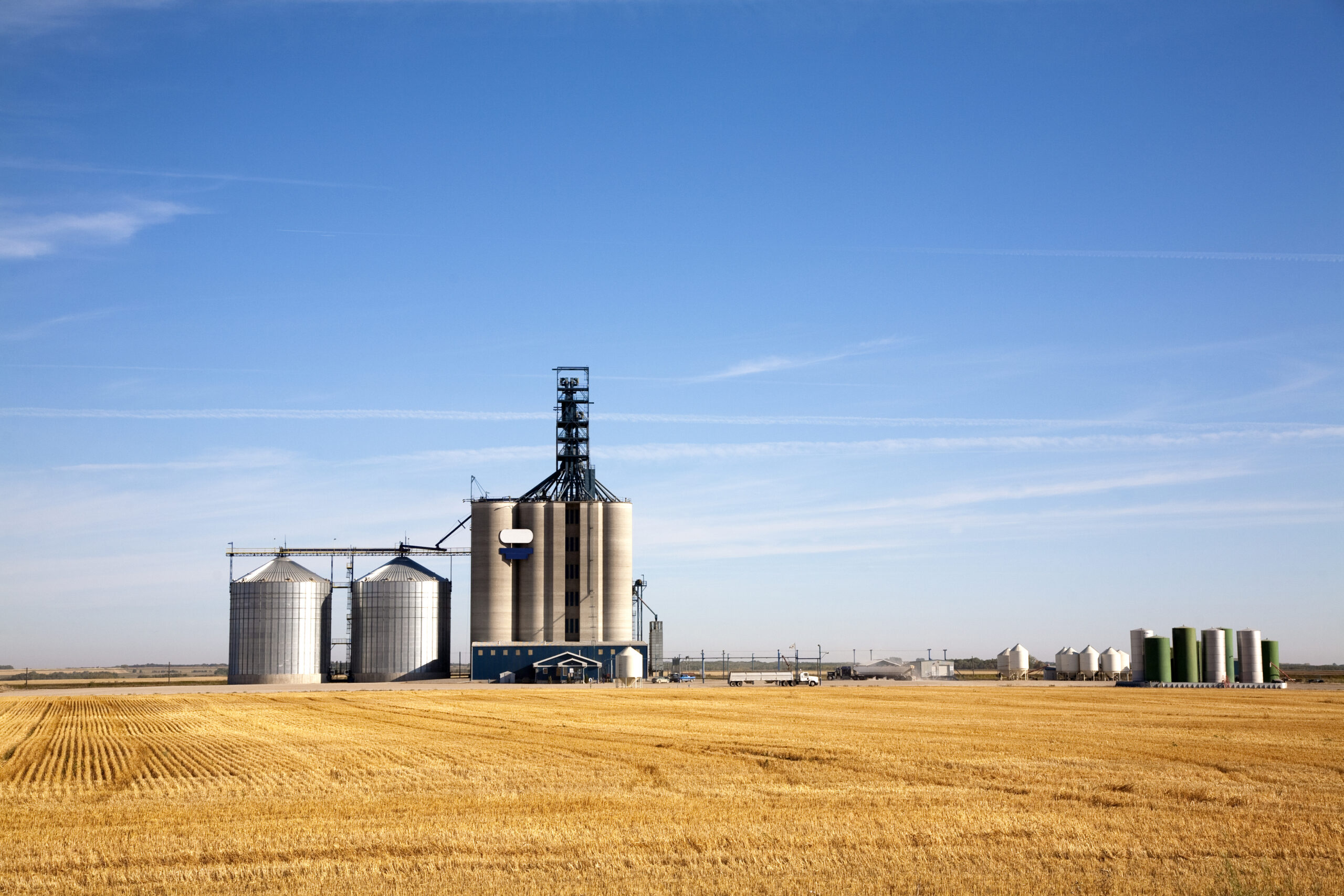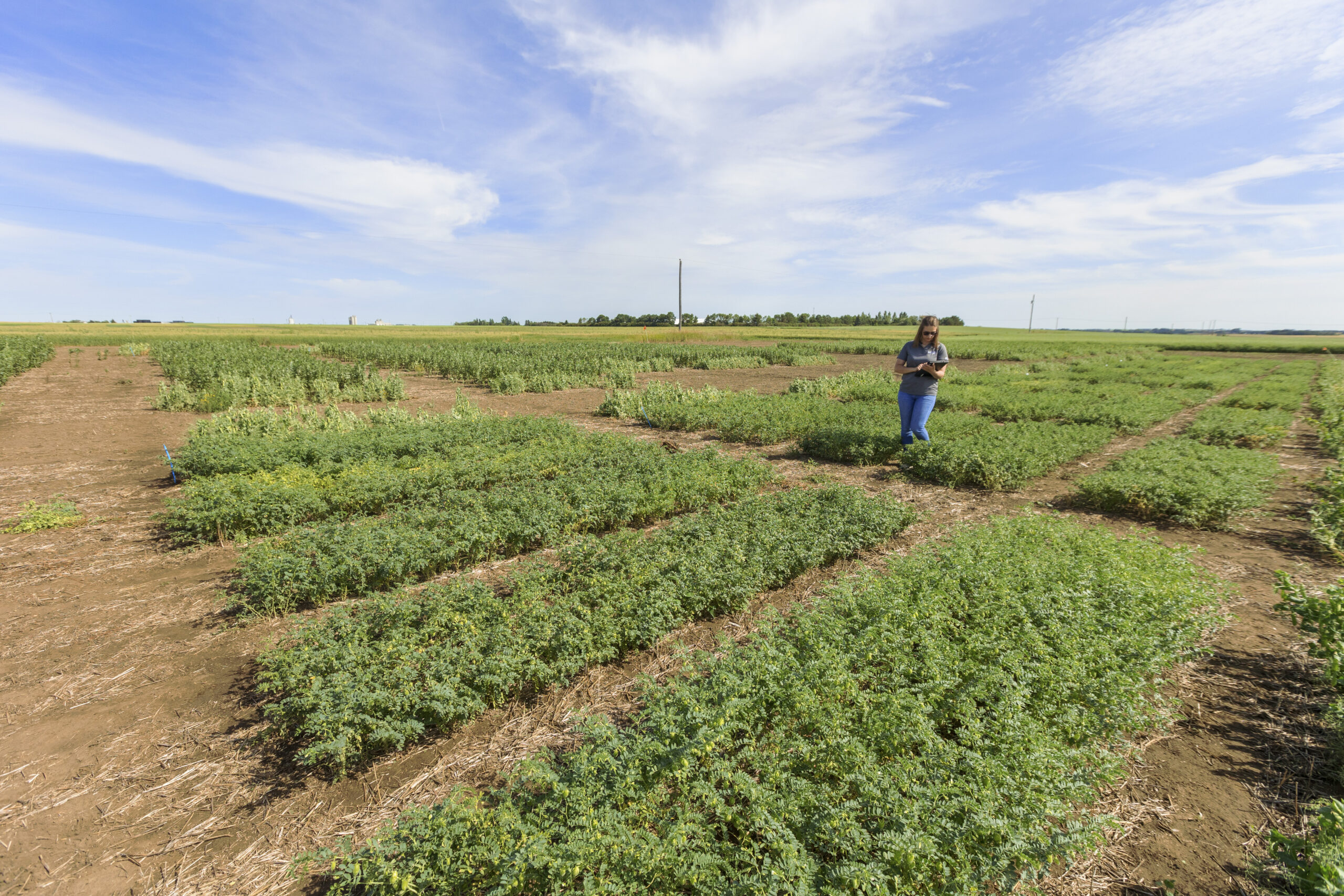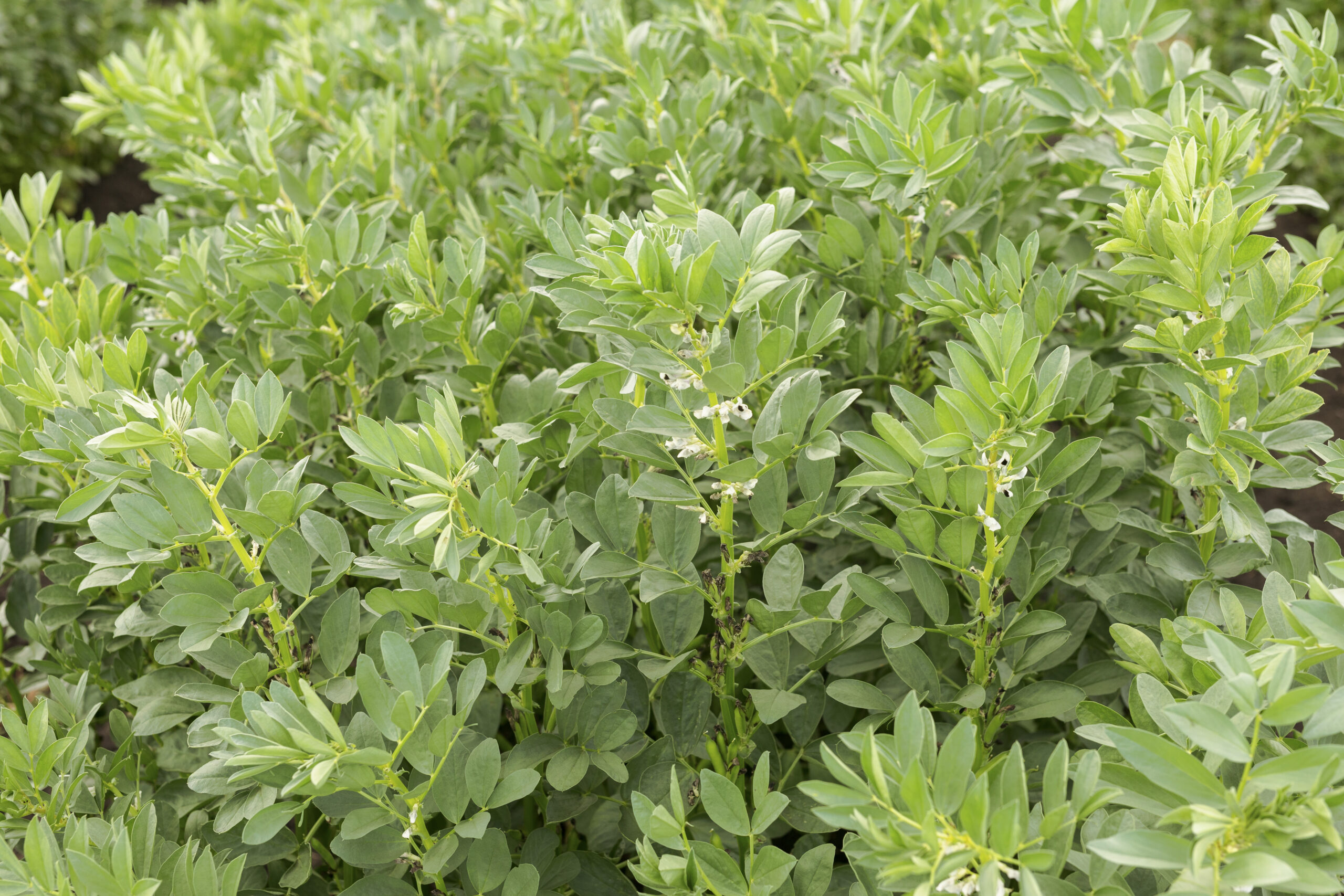By Brian Clancey, STAT Publishing Ltd.
December 2020
The 2020/21 marketing year got off to an amazing start for pea and lentil growers. Even though many farmers believe prices tend to peak after January, many took advantage of the strong demand and good prices to move a significant amount of product during the opening months of the 2020/21 marketing year.
By the end of November, growers had delivered an estimated 40% of all peas they had available on their farms to facilities required to report weekly movement to the Canadian Grain Commission, compared to 37% by the same time last year. Deliveries of lentils doubled from 18% to 36% of what they had available for sale.
In recent years, farmers sold an average of 10% of their lentils to companies who do not file weekly reports with the Canadian Grain Commission. For peas, that proportion appears minimal.
Two other types of disappearance are the quantities that will be held back as planting seed and sales to livestock feed markets. If you add that in, it looks like 49% of all peas on farms have ‘disappeared’, compared to 46% at the same time last year. For lentils, it looks like 46% has been spoken for, compared to 25% at the same time last season.
The implication for markets is that the peas and lentils that growers were eager to sell quickly are gone. Prices offered to growers started to ease by the end of November because demand is often slower during the holiday period but, once buyers start coming back, processors and exporters may need to start boosting bids to encourage farmers to open bins.
Though processing plants which break down peas and other pulses into protein, starch, and fibre fractions have started to ramp up demand this season, the reason movement was as strong as it was is due to demand from traditional markets. India’s decision to extend its import duty reduction on lentils until the end of the year was a significant boost through the first part of November. Given the time it takes to move lentils from the farm to a port in India, the window of opportunity will have closed. However, there is a suspicion some cargoes were diverted to India and some of those will need to be replaced.
A more significant decision may have come out of Turkey. It indefinitely reduced import duties on red lentils from 19.3% to 9%. It is thought this is a reaction to the weakness of its currency, which added to food price inflation. These import reductions could stay in place until Turkey is certain production rebounds.
The most controversial news comes from China. Some analysts think its forecast rebound in hog production and feed demand is a fantasy created to reassure its population. Whether or not that is the case, China has imported massive quantities of Canadian peas and other livestock feed ingredients.
In September, Canada exported over 657,000 tonnes of peas to China, with the result of Chinese purchases during the first two months of the marketing year being 185,000 tonnes over last year. Movement to China slowed considerably after September. It is hard to know how much of the decline reflects raw need or if pea prices reached levels which kicked them out of least cost formulas.
Despite the strength we have seen in pulses, the gap between the global price indices for pulses and those for grains and oilseeds is fairly wide. This may be because the world is seeing a global increase in trade in staple food commodities. Pulses benefitted, but many importers think demand has returned to normal levels after the surge in consumer buying seen earlier in the year.
This might have an impact on interest in planting pulses in some competing nations. If that happens, demand for what you grow could improve in the 2021/22 marketing year. That may be important because prospective gross returns from large green, small green, and red lentils are better than their previous three-year average versus wheat, durum, and canola. Peas and chickpeas are not doing as well as their previous three-year average.
There is a strong relationship between changes in that comparison and whether land in pulses in Canada rises or falls. Price performance so far this year suggests land in lentils should increase next spring, while peas may be moderately lower and chickpeas significantly lower unless farmers are successful reducing their inventories.
Prices and movement between January and March likely hold the key to what happens to seeded area in the spring. It now looks like India will seed almost 31 million (M) hectares (77 M acres) of pulses between its kharif and rabi planting cycles. Average yields would see total output jump about 3 M tonnes to 26.15 M tonnes. Chickpea output could be up 1.15 M tonnes at 12.5 M tonnes, while lentil production may jump from 1.18 M tonnes to 1.43 M tonnes.
The implication is India will not end its restrictions on pea imports and may decrease the quantity of peas it allows to be legally imported. Red lentil demand will also be down for two reasons. First, importers need to work through the product they bought in the months when import duties were lower. Second, once the rabi harvest begins, import needs will decline. It is important to understand India will not grow enough to meet domestic demand, with the result that India will not stop buying red lentils but it will likely buy less in 2021 than this year.
This is what makes Turkey’s reduction in lentil duties significant. That country has become an important way to cover demand in the Middle East for chickpeas, dry edible beans, and lentils. At the same time its domestic demand for imported pulses is up. Between January and September, Turkey imported over 455,000 tonnes of lentils and exported around 317,000 tonnes, with Sudan, Iraq, and Syria among the key destinations while Canada supplied 81% of all imported lentils. These are all record highs.
In the case of chickpeas and beans, Canada is not an important supplier. Turkey turned to Mexico and Russia to cover most of its chickpea needs. Russia was the main supplier of chickpeas, while most beans came from Argentina and Ethiopia.
As the new year gets underway, markets hope movement of peas to Bangladesh remains strong as well as lentils to Turkey and peas to China. While Australia has harvested massive Desi chickpea and lentil crops, Canadian yellow peas and red lentils are price competitive in those markets. The amount of demand and its influence on price hold the keys to the direction of plantings this spring among undecided growers.
Brian Clancey is the Editor and Publisher of www.statpub.com market news website and President of STAT Publishing Ltd. He can be reached at editor@ statpub.com.
Table 1. Supply and Demand Estimate for Canadian Lentils in 2020/21
| Large Green Lentils | Medium Green Lentils | Small Green Lentils | Extra-Small Red Lentils | Small Red Lentils | All Red Lentils | Other Lentils | All Lentils | |
|---|---|---|---|---|---|---|---|---|
| Area (acres) | 973,300 | 40,000 | 265,800 | 53,000 | 2,878,700 | 2,931,700 | 22,000 | 4,232,800 |
| Yield (lb/ac) | 1,366 | 1,268 | 1,494 | 1,289 | 1,547 | 1,542 | 1,102 | 1,494 |
| Production | 603,200 | 23,000 | 180,100 | 31,000 | 2,019,500 | 2,050,500 | 11,000 | 2,867,800 |
| Carry-In | 46,000 | 11,000 | 23,000 | 10,000 | 158,000 | 168,000 | 2,000 | 250,001 |
| Supply | 649,200 | 34,000 | 203,100 | 41,000 | 2,177,500 | 2,218,500 | 13,000 | 3,117,801 |
| Exports | 500,300 | 69,300 | 175,600 | 34,500 | 1,836,300 | 1,870,800 | 7,100 | 2,623,100 |
| Seed | 39,400 | 900 | 8,200 | 1,400 | 96,600 | 98,000 | 400 | 146,900 |
| Feed, Waste, and Other | 26,100 | 3,600 | 10,900 | 3,100 | 56,600 | 59,700 | 3,500 | 46,900 |
| Total Usage | 565,800 | 73,800 | 194,700 | 39,000 | 1,989,500 | 2,028,500 | 11,000 | 2,873,800 |
| Ending Stocks | 89,000 | 5,000 | 14,000 | 2,000 | 188,000 | 190,000 | 2,000 | 300,000 |
| Stocks/Use | 16% | 7% | 7% | 5% | 9% | 9% | 18% | 10% |
*All quantities in tonnes. Usage include imports.
Table 2. Supply and Demand Forecast for Canadian Lentils in 2021/22
| Large Green Lentils | Medium Green Lentils | Small Green Lentils | Extra-Small Red Lentils | Small Red Lentils | All Red Lentils | Other Lentils | All Lentils | |
|---|---|---|---|---|---|---|---|---|
| Area (acres) | 965,000 | 29,000 | 362,000 | 63,000 | 3,042,000 | 3,105,000 | 18,000 | 4,479,000 |
| Yield (lb/ac) | 1,190 | 1,292 | 1,334 | 1,260 | 1,408 | 1,405 | 1,225 | 1,352 |
| Production | 521,000 | 17,000 | 219,000 | 36,000 | 1,943,000 | 1,979,000 | 10,000 | 2,746,000 |
| Carry-In | 89,000 | 5,000 | 14,000 | 2,000 | 188,000 | 190,000 | 2,000 | 300,001 |
| Supply | 610,000 | 22,000 | 233,000 | 38,000 | 2,131,000 | 2,169,000 | 12,000 | 3,046,001 |
| Exports | 455,700 | 60,200 | 196,800 | 31,200 | 1,750,000 | 1,781,200 | 9,100 | 2,503,000 |
| Seed | 48,000 | 1,300 | 9,200 | 1,600 | 94,200 | 95,800 | 500 | 154,800 |
| Feed, Waste, and Other | 23,700 | 2,700 | 6,400 | 2,200 | 66,800 | 69,000 | 1,400 | 38,200 |
| Total Usage | 527,400 | 64,200 | 212,400 | 35,000 | 1,911,000 | 1,946,000 | 11,000 | 2,761,000 |
| Ending Stocks | 89,000 | 9,000 | 27,000 | 3,000 | 220,000 | 223,000 | 1,000 | 349,000 |
| Stocks/Use | 17% | 14% | 13% | 9% | 12% | 11% | 9% | 13% |
*All quantities in tonnes. Usage include imports.
Source: STAT Publishing Ltd.
Table 3. Supply and Demand Estimates for Canadian Chickpeas and Field Peas in 2020/21
| Desi Chickpeas | Kabuli Chickpeas | Small Kabuli Chickpeas | All Chickpeas | Yellow Peas | Green Peas | Other Peas | All Peas | |
|---|---|---|---|---|---|---|---|---|
| Area (acres) | 28,300 | 267,700 | 2,000 | 298,000 | 3,468,500 | 752,200 | 34,700 | 4,255,400 |
| Yield (lb/ac) | 1,729 | 1,576 | 882 | 1,586 | 2,258 | 2,279 | 1,912 | 2,259 |
| Production | 22,200 | 191,400 | 800 | 214,400 | 3,552,400 | 777,500 | 30,100 | 4,360,000 |
| Carry-In | 2,000 | 187,000 | 1,000 | 190,000 | 157,000 | 72,000 | 4,000 | 233,000 |
| Imports | 0 | 40,000 | 0 | 40,000 | 79,600 | 15,600 | 3,800 | 99,000 |
| Supply | 24,200 | 418,400 | 1,800 | 444,400 | 3,789,000 | 865,100 | 37,900 | 4,692,000 |
| Exports | 11,000 | 114,000 | 1,000 | 126,000 | 3,143,300 | 508,000 | 29,700 | 3,681,000 |
| Seed | 1,214 | 17,000 | 200 | 18,414 | 249,000 | 35,000 | 4,000 | 288,000 |
| Feed, Waste, and Other | 8,986 | 84,400 | 600 | 86,400 | 280,700 | 105,100 | 2,200 | 388,000 |
| Total Usage | 21,200 | 215,400 | 1,800 | 230,814 | 3,673,000 | 648,100 | 35,900 | 4,357,000 |
| Ending Stocks | 3,000 | 203,000 | 0 | 206,000 | 116,000 | 217,000 | 2,000 | 335,000 |
| Stocks/Use | 14% | 94% | 0% | 89% | 3% | 33% | 6% | 8% |
*All quantities in tonnes. Domestic usage includes imports.
Table 4. Supply and Demand Forecast for Canadian Chickpeas and Field Peas in 2021/22
| Desi Chickpeas | Kabuli Chickpeas | Small Kabuli Chickpeas | All Chickpeas | Yellow Peas | Green Peas | Other Peas | All Peas | |
|---|---|---|---|---|---|---|---|---|
| Area (acres) | 30,000 | 210,000 | 3,000 | 243,000 | 3,539,300 | 502,500 | 58,200 | 4,100,000 |
| Yield (lb/ac) | 1,852 | 1,445 | 1,323 | 1,488 | 2,258 | 2,297 | 1,974 | 2,259 |
| Production | 25,200 | 137,600 | 1,800 | 164,000 | 3,625,300 | 523,600 | 52,100 | 4,201,000 |
| Carry-In | 3,000 | 203,000 | 0 | 206,000 | 116,000 | 217,000 | 2,000 | 335,000 |
| Imports | 0 | 38,000 | 0 | 38,000 | 80,400 | 15,700 | 3,900 | 100,000 |
| Supply | 28,200 | 378,600 | 1,800 | 408,000 | 3,821,700 | 756,300 | 58,000 | 4,636,000 |
| Exports | 13,000 | 142,700 | 1,000 | 156,700 | 3,065,200 | 473,000 | 44,800 | 3,583,000 |
| Seed | 1,214 | 16,900 | 200 | 18,314 | 252,000 | 40,000 | 5,000 | 297,000 |
| Feed, Waste, and Other | 6,986 | 89,000 | 600 | 93,400 | 307,500 | 142,300 | 6,200 | 456,000 |
| Total Usage | 21,200 | 248,600 | 1,800 | 268,414 | 3,624,700 | 655,300 | 56,000 | 4,336,000 |
| Ending Stocks | 7,000 | 130,000 | 0 | 137,000 | 197,000 | 101,000 | 2,000 | 300,000 |
| Stocks/Use | 33% | 52% | 0% | 51% | 5% | 15% | 4% | 7% |
*All quantities in tonnes. Domestic usage includes imports.
Source: STAT Publishing Ltd.



